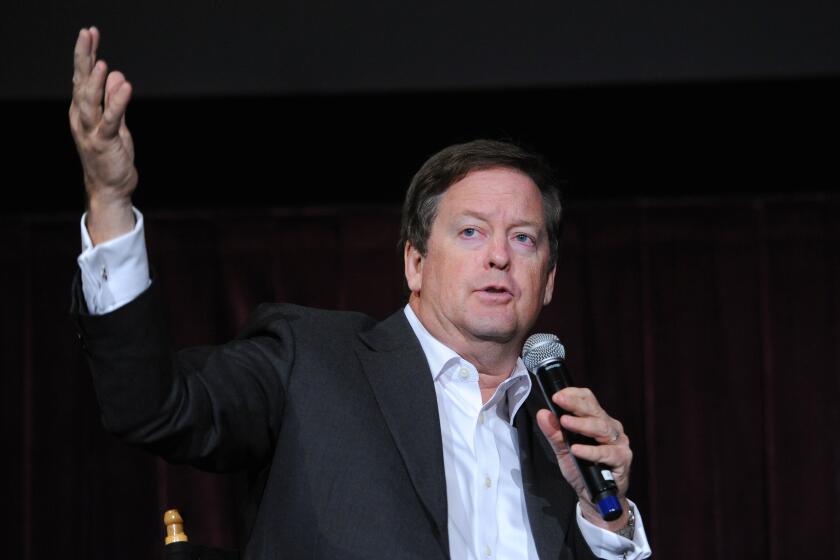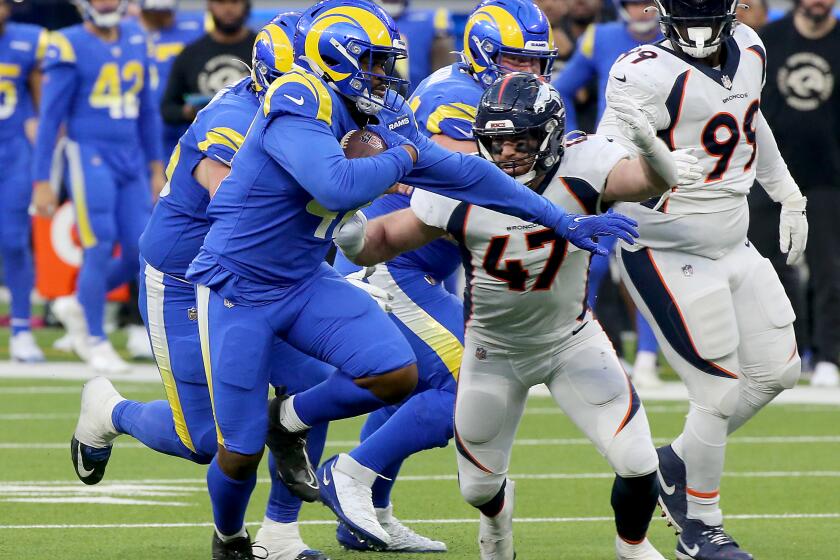The art of the foreclosed home
Financial disaster can be a potent muse; the Great Depression inspired notable paintings and sculpture, music and literature. For artist Emily Kennerk, inspiration came, in an unnerving way, one day last year when she walked past a nearby sand-colored, red-roofed, two-story home.
Kennerk and her miniature pinscher, Gus, had strolled by the house almost daily. The dark-haired kids who lived there often jumped off their Big Wheels to pet Gus. Then one afternoon Kennerk noticed the home’s unlit windows and vacant driveway and, finally, an orange flier on the garage:
“Notice to Tenants of the Property: Foreclosure proceedings against this property have started …”
And so Kennerk began piecing together photos, video and installations to create the exhibit “America’s #1 Foreclosed City: Las Vegas.”
Kennerk, 37, often explores the concept of “number one-ness”: Years ago, she displayed together the country’s top movie, CD and book. The combo of “Titanic,” the “8 Mile” soundtrack and the Bible provided an intriguing window into the American psyche.
Several of her shows have focused on housing — not surprising, considering how she spent childhood weekends in Indiana. Her father, a land developer, loaded his six kids (Kennerk was No. 3) into the station wagon. He promised them ice cream, but only after they’d tooled around looking at land.
“I probably knew zoning codes before I knew my times tables,” Kennerk said. She also learned how a home or business could imbue meaning on a patch of nothing.
The day Kennerk ran across the abandoned home in her neighborhood, she snapped a photo and began brainstorming: In Las Vegas, the foreclosure notice had become as omnipresent as a stop sign, diluting its symbolic power. How could Kennerk, who teaches sculpture at the University of Nevada, Las Vegas, present the hallmarks of the housing crisis in a different way?
When she first discussed the project with the Contemporary Arts Center, a small gallery in a gentrifying section of downtown, Kennerk was apprehensive. But director Wendy Kveck was interested in works that carried “emotional weight,” even if they were melancholy.
“There is a concern in aestheticizing misery as opposed to confronting it,” Kveck said, but she felt the bleakness of Kennerk’s work reflected Nevada’s woes.
“It has a ghostly quality,” she said. “It’s a solemn space, almost like a memorial.”
Mesmerized by the grainy photos of unfurnished rooms that real estate sites posted, Kennerk blew up three images on wispy fabric. You can decipher windows, sometimes a room’s corner. The pieces — 5 feet high and roughly 8 feet wide — are titled by multiple listing service, or MLS, numbers used by real estate brokers:
#9881487. #700121. #32337401.
During the exhibit’s opening last month, a woman praised the fabric panels as beautiful and dreamy. After Kennerk explained their origin, the woman froze. “She looked at me and said, ‘This is awful. This is depressing and it’s awful.’ And she walked out of the door,” Kennerk said.
The same night, a man approached a white wall, bare but for the orange foreclosure notice that had unnerved Kennerk. He began to read: “… and a notice of sale of the property to the highest bidder has been issued.”
His face drooped, and he scurried out of the gallery.
The show, which closes Wednesday, moved Steve Franklin in a different way. A real estate agent known as “Downtown Steve,” he’d been dealing with the foreclosure fallout on a daily basis: Calls with clients turned into therapy sessions about their housing woes. One client recently attempted suicide.
On a recent night, a piece called “Untitled (Death of the American Dream)” gave Franklin chills. Kennerk had used graphite and paper to make a giant rubbing of a bank-owned home, like one might with a tombstone.
Franklin noted the faded outlines of vinyl siding, lava rock, a lockbox, a foreclosure notice. “This is creepy-real,” he said. “There’s a hole in the paper, and I show homes with holes in the wall. It’s like being in a ghost house or something.”
The exhibit’s most poignant section, however, might be the video.
Kennerk had hoped to photograph each foreclosure in the region, but realized that was impractical: There were 79,560 last year, according to data RealtyTrac provided her. Instead, she had hundreds of pictures of foreclosed homes run on a loop, one house per second, to represent all the bank-owned properties.
The first home is a stucco box with a prominent garage and a for-sale sign. Another is ranch-style, and mostly obscured by trees. Some homes resemble archeological ruins, others palaces fit for casino executives. They flash by without voiceovers, in the manner of tributes to the dead.
The video runs for 22 hours and 9 minutes.
ashley.powers@latimes.com
More to Read
The biggest entertainment stories
Get our big stories about Hollywood, film, television, music, arts, culture and more right in your inbox as soon as they publish.
You may occasionally receive promotional content from the Los Angeles Times.






